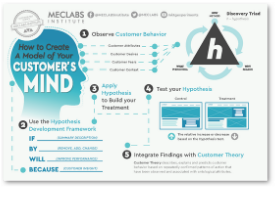Thanks for all of your questions before and after our teleseminar, ‘B-to-B Marketing: Top 10 Quick Fixes’, last week. More than 100 Sherpa readers wrote in, and I and our senior reporter Sean Donahue are preparing answers to post with our compliments on Sherpa by next week.
In the meantime, I wanted to address one particular query which came up a few times: “Where specifically did Sherpa get that B-to-B marketing data?”
Here’s the answer on a slide-by-slide basis, along with a hotlink to a PDF of the slides, so that you could review the charts again if you’d like. I understand that many of you may be sharing this data with your management team, and so this question is of high concern.
Slide #3. Internal Search Counts
This example is based on MarketingSherpa.com’s own internal reports of traffic using the search box on our site. We happen to power our search with technology from Visual Sciences, but this type of report is fairly basic and should be available no matter which search technology you use.
Slide #4. High-Quality Leads Generated by Events
Sherpa surveyed 1,038 B-to-B technology marketers in April 2007, asking them about the quality and quantity of leads they received from typical events in the past year. We’ve run this survey annually for five years, and the data on this point is highly similar every time. I feel safe in considering it fairly “evergreen.”
Slide #9. Drop Registration Barriers
These two funnels were created based on aggregated numbers rather than on one particular study or on a single marketer’s Case Study. We reviewed hundreds of Sherpa Case Studies, dozens of Sherpa B-to-B Summit presentations, and five years of extensive surveys of B-to-B marketers and their prospects. These numbers represent the trends evident across all this material. Your own campaigns naturally will have different numbers, but we’re fairly sure that the overall result will be the same: barriers significantly decrease audience.
Slide #11. Typical Lead Database Breakdown
I consider this pie chart to be one of the most critical ones in the presentation. It’s one I strongly suggest every B-to-B marketing department build using their own internal data. Your numbers will inevitably be different because everyone’s business is unique. However, based on Sherpa Case Studies and Sherpa B-to-B Summit Presentations, I’m absolutely sure that your pie will break into the same types of slices.
You’ll have some sales-ready leads – probably in the 5%-12% range if you’re anything like the hundreds of marketers I’ve spoken with. You’ll have a slightly larger group of mid-term leads – prospects who could be sales-ready with a few weeks or months of nurturing. Your largest group will probably be the long-term leads – prospects who have months or even years to go before they are sales-ready but who will either reach that point some day or become a key influencer to the sales-ready crowd. And last, you’ll have some duds – the number often depends on how many students and competitors are in your field.
The specific dollar values we put in this chart were based on assumptions of 10% of nurtured leads converting to being sales-ready, and 35% of sales-ready leads converting at an average $95,000 sale. Obviously, your numbers will vary widely. The important thing is that you know what your pie looks like, and you can assign your own numbers to it. Then, use that pie to convince management to let you spend more time and perhaps budget on nurturing activities!
Slide #13. Telemarketing Timing
These telemarketing results is data presented by MIT Professor Dr. James Oldroyd and Inside Sales’ Dave Ellington at Marketing Sherpa’s B-to-B Summit in October 2007. They detailed study data across lead-qualification telemarketing for hundreds of clients as well as Case Study data for Franklin Covey. Your own telemarketing data will vary; however, the trend will almost certainly hold true. The longer you wait to call an inbound lead, the less positive the result will be. And “too long” might be a matter of just a few hours.
The key to all these slides: You need to start measuring these factors for yourself. In fact, these measurements may be just as or more useful for your marketing programs than the sorts of measurements – email open rates and cost per lead, for instance – that dominate your current marketing reports.
I hope this was helpful and I look forward to answering the rest of your questions by next week! In the meantime, here’s a hotlink to the presentation PDF as well as a transcript from the actual event:
PowerPoint: http://www.marketingsherpa.com/tele/B2BHB08.pdf
Transcript: http://www.marketingsherpa.com/article.html?ident=30707












